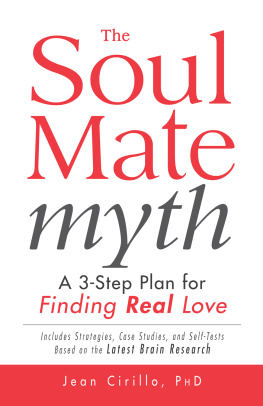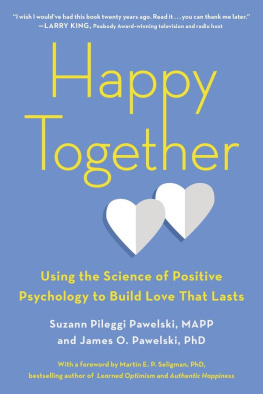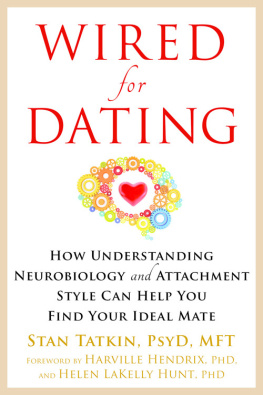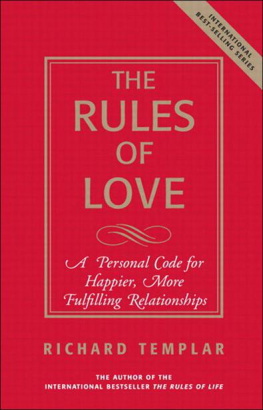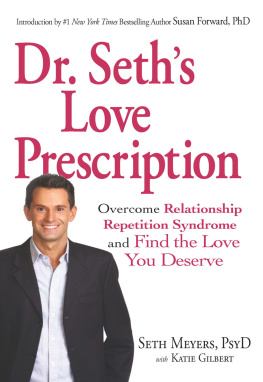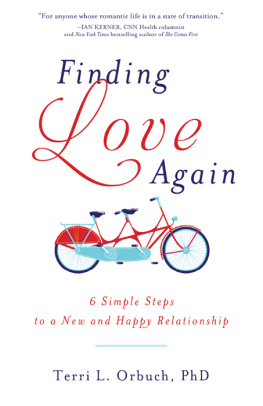About the Author
Vera Sonja Maass, PhD, is a licensed clinical psychologist, counselor, and marriage and family therapist in private practice. Dr. Maass has enjoyed adjunct faculty status at local colleges and universities and has conducted several personal growth groups addressing popular psychological topics of interest to the community. She is the author of several books, including The Cinderella Test:Would You Really Want the Shoe to Fit?Subtle Ways Women Are Seducedand Socialized into Servitude and Stereotypes and Lifestyle Changes: A CliniciansGuide to Common Events, Challenges, and Options.
Acknowledgments
M y special thanks are deserved by the brave members of the Single Again groups for their willingness to share their experiences with the general public. Similarly, to clients from therapeutic settings and those individuals from the community at large who graciously consented to disclose their past experiences as well as their hopes for the future goes my sincere gratitude. Although their true identities remain hidden, their voices speak openly from the pages of this book.
Finally, I want to express my appreciation to all those courageous people who turn to advice-seeking columns in the newspapers for help with their individual relationship-related struggles. By exposing their difficulties to the public eye, they are presenting the rest of us with a real-life picture of our societythank you all and please continue with your communication efforts.
Last but certainly not least, my thanks go to senior acquisitions editor Suzanne I. Staszak-Silva for supporting the message of this book and to Melissa McNitt, associate editor, production, for her careful attention to all the details during the production phase of the book.
Bibliography
Allport, Gordon W. Pattern and growth in personality. New York: Holt, Rinehart, & Winston, 1961.
Amato, Paul R. Explaining the intergenerational transmission of divorce. Journal ofMarriage and the Family 58 (1996): 62840.
Amato, Paul R., and D. D. DeBoer. The transmission of marital instability across generations: Relationship skills or commitment to marriage? Journal of Marriage and Family 63 (2001): 103851.
Arbinger Institute. Leadership and self-deception: Getting out of the box, 2nd ed. San Francisco: Berrett-Koehler, 2010.
Bartholomew, K. Avoidance of intimacy: An attachment perspective. Journal ofSocial and Personal Relationships 7 (1990): 14778.
Baumeister, Roy F., Ellen Bratlavsky, Catrin Finkenauer, and Kathleen D. Vohs. Bad is stronger than good. Review of General Psychology 5 (2001): 32370.
Bentler, P. M., and M. D. Newcomb. Longitudinal study of marital success and failure. Journal of Consulting and Clinical Psychology 46 (1978): 105370.
Ben-Zev, Aaron. In the name of love. Psychology Today blog, October 31, 2008.
Binstock, Georgina, and Arland Thornton. Separations, reconciliations, and living apart in cohabiting and marital unions. Journal of Marriage and Family 65 (May 2003): 43243.
Booker, C. The seven basic plots: Why we tell stories. London: Continuum, 2005.
Boon, S. D., and B. A. McLeod. Deception in romantic relationships: Subjective estimates of success at deceiving and attitudes toward deception. Journal of Social and Personal Relationships 18 (2001): 46376.
Bornstein, Robert F. The complex relationship between dependency and domestic violence: Converging psychological factors and social forces. American Psychologist 61 (2006): 595606.
Bouchard, G. L., Y. Lussier, and S. Sabourin. Personality and marital adjustment: Utility of the five-factor model of personality. Journal of Marriage and Family 61 (1999): 65160.
Bowlby, John. Attachment and loss. 3 vols. New York: Basic Books, 19691980.
. A secure base. New York: Basic Books, 1988.
Brines, J., and K. Joyner. The ties that bind: Principles of cohesion in cohabitation and marriage. American Sociological Review 64 (1999): 33355.
Bumpass, Larry L., and H.-H. Lu. Trends in cohabitation and implications for childrens contexts in the United States. Population Studies 54 (2000): 2941.
Bumpass, Larry L., T. C. Martin, and J. A. Sweet. The impact of family background and early marital factors on marital disruption. Journal of Family Issues 12 (1991): 2242.
Busby, Dean M., and B. C. Gardner. How do I analyze thee? Let me count the ways: Considering empathy in couple relationships using self and partner ratings. Family Process 47 (2008): 22942.
Busby, Dean M., Thomas B. Holman, and Sylvia Niehuis. The association between partner enhancement and self-enhancement and relationship quality outcomes. Journal of Marriage and Family 71 (August 2009): 44964.
Call, Vaughn, Susan Sprecher, and Pepper Schwartz. The incidence and frequency of marital sex in a national sample. Journal of Marriage and the Family 57 (1995): 63952.
Casper, L. M., and P. N. Cohen. How does POSSLQ measure up? Historical estimates of cohabitation. Demography 37 (2000): 23745.
Cassidy, Jude. Adult romantic attachments: A developmental perspective on individual differences. Review of General Psychology 4, no. 2 (2000): 11131.
Clarke, S. C. Advance report of final divorce statistics, 1998 and 1990 (Monthly Vital Statistics Report, vol. 43, no. 9, Supplement). Hyattsville, MD: National Center for Health Statistics, 1995.
Clements, Mari L., Scott M. Stanley, and Howard J. Markman. Before they said I do: Discriminating among marital outcomes over 13 years. Journal of Marriage and Family 66 (2004): 61326.
Coontz, Stephanie. The world historical transformation of marriage. Journal ofMarriage and Family 66 (2004): 97479.
Cott, Nancy F. Public vows: A history of marriage and the nation. Cambridge, MA: Harvard University Press, 2000. Quoting sociologists Robert and Helen Lynd.
Cutrona, Carolyn E. A psychological perspective: Marriage and the social provisions of relationships. Journal of Marriage and Family 66 (November 2004): 99299.
Deitz, Susan. Single file: How to live happily forever after with or without Prince Charming. New York: St. Martins Press, 1989.
Diagnostic and statistical manual of mental disorders, 4th ed. Washington, DC: American Psychiatric Association, 1994.
Diagnostic and statistical manual of mental disorders, 4th ed., text rev. (DSM-IV-TR). Washington, DC: APA, 2007.
Fein, Ellen, and Sherrie Schneider. All the rules: Time-tested secrets for capturing the heart of Mr. Right. New York: Grand Central Publishing, 2007; first compilation edition of The Rules and Rules II.
Fine, Cordelia. A mind of its own: How your brain distorts and deceives. New York: W. W. Norton, 2006.
Fowers, Blaine J., E. M. Lyons, K. H. Montel, and N. Shaked. Positive illusions of marriage among married and single individuals. Journal of Family Psychology 15 (2001): 95109.
Garcia, L. T., and Charlotte N. Markey. Matching in sexual experience for married, cohabiting, and dating couples. Journal of Sex Research 44 (2007): 25055.
Geller, Jaclyn. Here comes the bride: Women, weddings, and the marriage mystique, 214. New York: Four Walls Eight Windows, 2001.
Gottman, John M., James A. Coan, Sybil Carrre, and C. Swanson. Predicting marital happiness and stability from newlywed interactions. Journal of Marriage and the Family 60 (1998): 522.
Grierson, Bruce. Weathering the storm. Psychology Today 42 (May/June 2009): 68.
Gross, Michael Joseph. A vast right-wing hypocrisy.




